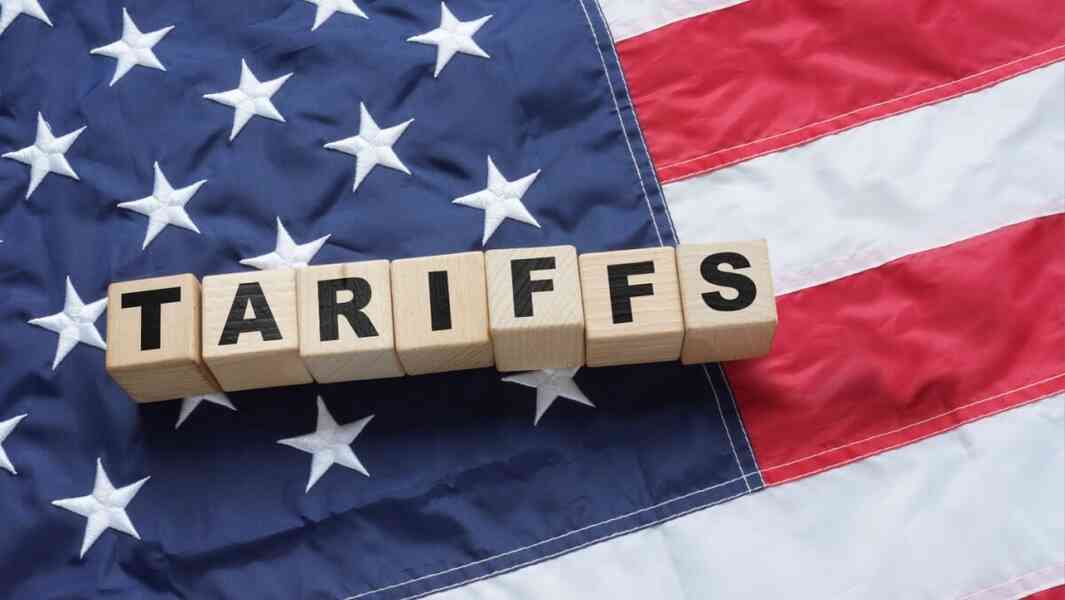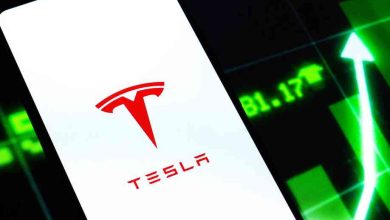Why Tariffs Spark Money Flux: Win or Risk Big?
Global markets reel as tariffs reshape trade—your cash at stake.

Global trade is under fire in April 2025, and your money feels the heat. U.S. President Donald Trump’s sweeping tariffs—10% on most imports, up to 50% on select nations—have ignited a financial storm. Stock markets are bleeding, supply chains are buckling, and consumers face higher prices. International reactions range from panic to calculated counterattacks, reshaping the economic landscape. This isn’t just policy noise; it’s a direct hit to your portfolio, grocery bill, and job security. Here’s the hard data, expert insights, and actionable steps to navigate this tariff-driven chaos as of April 7, 2025.
Markets in Freefall: The Numbers Don’t Lie
The S&P 500 plummeted 9.1% last week, closing at 4,874.23 on April 4, 2025, per Bloomberg, officially entering bear market territory (down 20% from its September 2024 peak of 6,092.79). The Nasdaq shed 10.02%, ending at 15,237.41, while the Dow Jones Industrial Average fell 7.86% to 39,458.12. Globally, the damage is worse: Japan’s Nikkei 225 cratered 12.4% to 33,214.87, and Germany’s DAX dropped 8.7% to 17,892.34. Over $10 trillion in market value vanished worldwide, according to CNBC’s real-time tracking.
Why the carnage? Trump’s tariffs, announced April 2, slapped a blanket 10% duty on all U.S. imports, with 185 countries facing additional levies—25% on Canada and Mexico, 50% on China—effective April 9. China retaliated with a 34% tariff hike on U.S. goods, and the EU is prepping counter-tariffs on $28 billion of American products, per Reuters. Investors are dumping stocks, fearing a global recession. The Cboe Volatility Index (.VIX) hit 46.98 on April 7, its highest since April 2020, signaling extreme market fear.
Commodities aren’t spared. Crude oil fell to $58.72 per barrel, a 14-month low, as trade barriers threaten demand. Gold, typically a safe haven, dropped 4.2% to $3,055.10 per ounce, reflecting panic selling. The U.S. dollar weakened 1.3% against the Swiss franc, a safe-haven currency, per the Wall Street Journal.
Businesses Brace for Pain
Corporate America is reeling. Walmart, heavily reliant on Chinese imports, saw its stock slide 6.8% to $73.41, potentially passing higher costs to consumers. Apple, with 20% of its supply chain in China, fell 8.2% to $216.54, facing margin squeezes. Ford Motor Co. dropped 5.9% to $12.87 as 25% tariffs on Mexican-made vehicles loom. J.P. Morgan estimates U.S. companies could lose $1.2 trillion in revenue over two years if tariffs persist.
Small businesses aren’t immune. The National Federation of Independent Businesses reported 68% of its members expect higher input costs by Q3 2025. Take Jane’s Boutique, a fictional but representative retailer in Ohio: 60% of its inventory comes from China. A 50% tariff could force price hikes or layoffs, slashing its $500,000 annual revenue by a third.
Globally, firms are scrambling. Germany’s Volkswagen AG, down 7.1% to €92.45, warned of a 15% production cut in North America. Japan’s Toyota Motor Corp., hit by a 24% U.S. tariff, fell 9.3% to ¥2,314. Jaguar Land Rover halted U.S. shipments entirely, per the Guardian, citing “unviable” costs.

International Backlash: Allies and Rivals Strike Back
China’s response was swift and fierce. On April 5, Beijing imposed a 34% tariff on U.S. goods, targeting $21 billion in agriculture and tech exports. “The market has spoken,” China’s Ministry of Commerce declared, urging “equal-footed consultation.” The Shanghai Composite Index dropped 6.2% to 3,214.78, reflecting fears of a prolonged trade war.
The EU is playing hardball. French President Emmanuel Macron urged companies to pause U.S. investments, while Germany’s acting Economy Minister Robert Habeck predicted Trump might “buckle” under unified pressure, per Euronews. The EU plans retaliatory tariffs on U.S. products like orange juice and Harley-Davidson motorcycles, but spared bourbon after lobbying from France and Italy, according to the Financial Times. The Stoxx Europe 600 fell 4.5% to 492.17, with every sector in the red.
Canada, stung by a 25% tariff, saw protests erupt in Toronto and Ottawa. Prime Minister Mark Carney warned of a “major negative effect” on jobs, with Canada’s S&P/TSX Composite down 5.6% to 22,341.92. Mexico, also facing 25% duties, is mulling reciprocal tariffs, per Bloomberg. Japan, hit with a 24% levy, opened talks with U.S. Treasury Secretary Scott Bessent, who signaled flexibility. More than 50 nations, from Indonesia to Brazil, are negotiating exemptions, per CNBC.
Expert Takes: Navigating the Tariff Tempest
“This isn’t a trade war; it’s economic trench warfare,” says Jamie Dimon, CEO of J.P. Morgan Chase, in a April 7 Guardian interview. He warns that prolonged tariffs could lock in higher prices and spark a U.S. recession by Q4 2025, with a 60% probability up from 40% last month. Dimon’s advice? Companies should diversify supply chains now—think Vietnam or India—before costs spiral.
Stephanie Ekolo, a London-based market strategist at Tradition, told Reuters the market rout “is unlikely to be over.” She flags small-cap stocks, like those in the Russell 2000 (down 9.7% to 2,014.32), as particularly vulnerable due to thin margins. Ekolo suggests investors pivot to defensive sectors like utilities, which fell just 2.1% versus tech’s 11.3%.
Carsten Brzeski, ING’s global macro head, told Reuters Germany faces a third year of recession in 2025, with GDP growth revised down to -0.4%. He urges European firms to lobby for tariff carve-outs while hedging against a stronger dollar. For consumers, Brzeski predicts a 3-5% rise in retail prices by summer 2025, hitting electronics and clothing hardest.
Ed Yardeni of Yardeni Research offers a contrarian view on Yahoo Finance: “It’s too late to panic.” He argues markets overreacted and expects Trump to soften tariffs after negotiations. Yardeni points to U.S. Steel, up 9% to $42.31 after tariff exemptions, as a buy signal for industrials.
Economic Ripple Effects: Your Wallet Takes a Hit
Tariffs don’t just bruise stocks—they inflate everyday costs. Economists at the Peterson Institute estimate a 10% blanket tariff could boost U.S. consumer prices by 1.5% annually, adding $1,200 to the average household’s expenses in 2026. Chinese goods, like smartphones and toys, could jump 20% in price under a 50% tariff. During Trump’s first term, a 2018 study by the National Bureau of Economic Research found 90% of Chinese tariff costs were passed to U.S. buyers—not foreign exporters.
Jobs are another casualty. The U.S. Chamber of Commerce projects 1.4 million job losses by 2027 if tariffs escalate, especially in retail and agriculture. Yet, Trump claims tariffs will revive manufacturing. A 2024 SEC filing from U.S. Steel supports this, citing 2,000 new jobs tied to tariff-protected projects. The catch? Higher wages could fuel inflation, with the Federal Reserve eyeing a 0.25% rate hike by June 2025, per CME FedWatch data.
Globally, the IMF slashed its 2025 growth forecast to 2.8% from 3.2%, citing trade disruptions. Developing nations like Vietnam, reliant on U.S. exports, face a 10% trade volume drop, per the World Bank. Even neutral players like Switzerland saw their franc rally 1.8% against the dollar, signaling capital flight to safety.
Your Money Now: Actionable Tips to Stay Ahead
- Diversify Investments: Tech stocks like Apple and Nvidia (down 10.4% to $119.23) are tariff casualties. Shift 20% of your portfolio to utilities (e.g., NextEra Energy, up 1.2% to $82.14) or healthcare (e.g., UnitedHealth, down 0.9% to $498.76), which are less trade-sensitive, per S&P Global data.
- Hedge Inflation: Consumer prices are climbing. Lock in fixed-rate loans now—30-year mortgage rates hit 7.1% on April 7, per Freddie Mac. Consider Treasury Inflation-Protected Securities (TIPS), yielding 2.3% annually, to shield savings.
- Shop Smart: Retailers like Target (down 4.7% to $140.88) may hike prices soon. Stock up on non-perishables and electronics before summer. Compare prices online—Walmart’s app shows 10% cheaper alternatives for tariff-hit goods.
- Boost Cash Reserves: A recession looms. Aim for six months’ expenses in a high-yield savings account (average APY 4.5%, per Bankrate). Ally Bank offers 4.8% with no fees—move funds today.
- Watch Trade Talks: Over 50 countries are negotiating tariff relief. Monitor headlines on Japan and the EU via Bloomberg’s app. A deal could lift markets 5-10% overnight, creating buy opportunities in industrials like Caterpillar (down 6.3% to $374.21).
The Road Ahead: Uncertainty Rules
Tariff talks are a wildcard. Trump’s April 7 threat of a 50% tariff hike on China—potentially 104% cumulative—sent futures tumbling 2% pre-market. Yet, Bessent’s “meaningful negotiations” with 50+ nations hint at compromises. Japan’s Nikkei rallied 1.8% intraday on April 7 after positive U.S. talks, per Yahoo Finance. Still, volatility is king: the VIX’s 46.98 level suggests 3-5% daily swings through April.
Consumers face a squeeze. Walmart’s Q1 2025 earnings (due May 15) will reveal if tariff costs hit shoppers yet—analysts expect a 4% price increase. Small businesses, like Jane’s Boutique, may cut hours or close, per NFIB surveys. Jobs data due April 11 from the Bureau of Labor Statistics could show unemployment ticking up from 4.1% to 4.3%, signaling broader pain.
Investors aren’t helpless. Yardeni’s “don’t panic” mantra holds if you act fast—rebalance portfolios, hoard cash, and track trade headlines. Dimon’s warning of a “hard to reverse” downturn looms, but strategic moves now can limit damage. Stay sharp with Ongoing Now 24.





